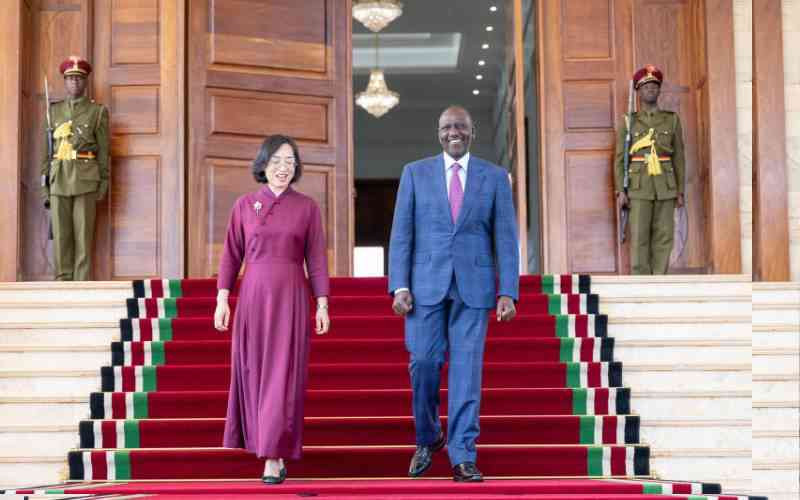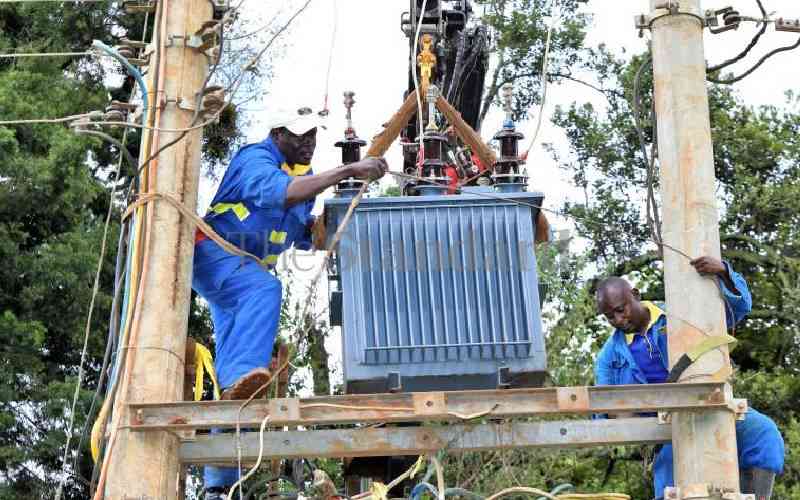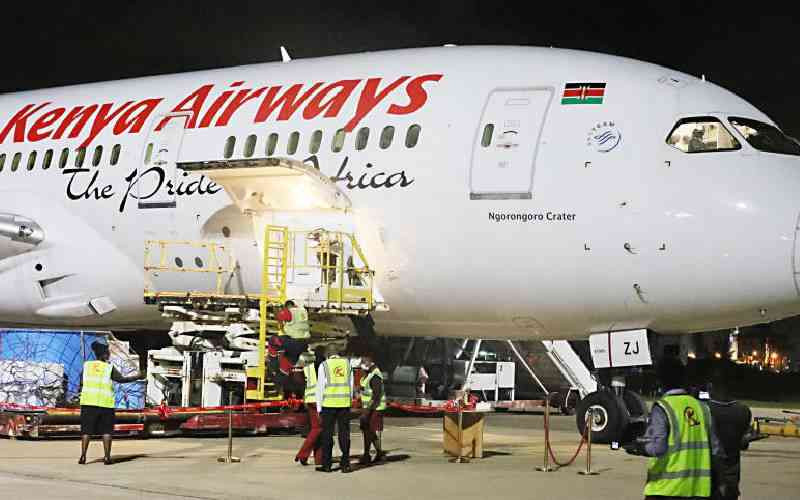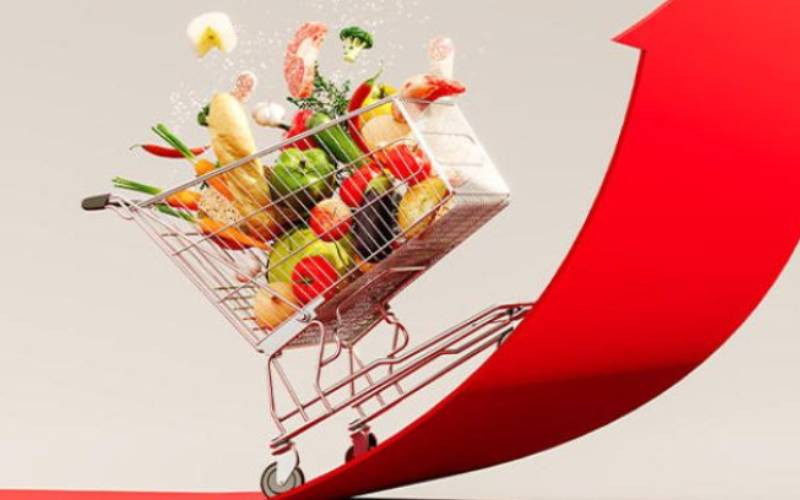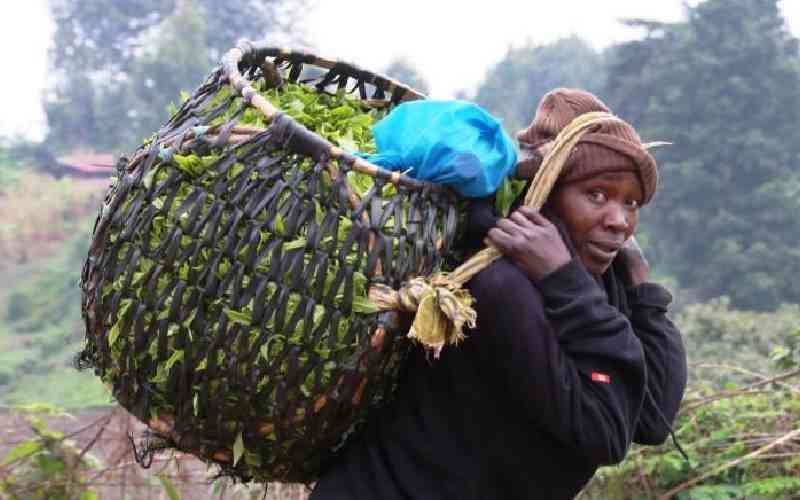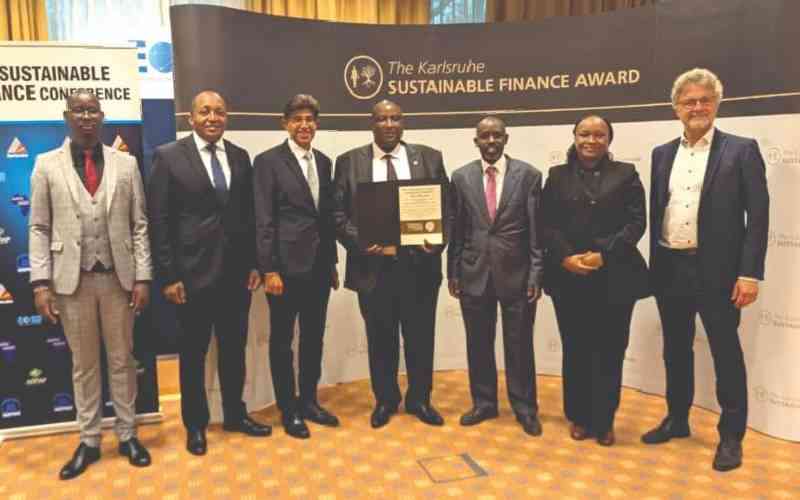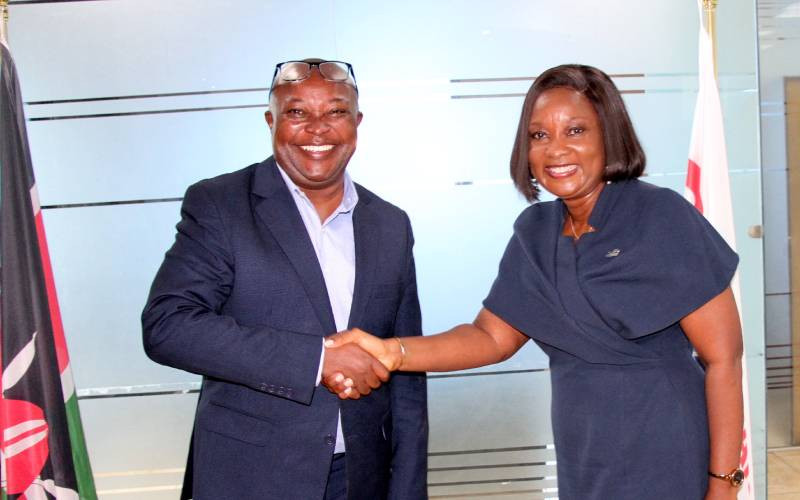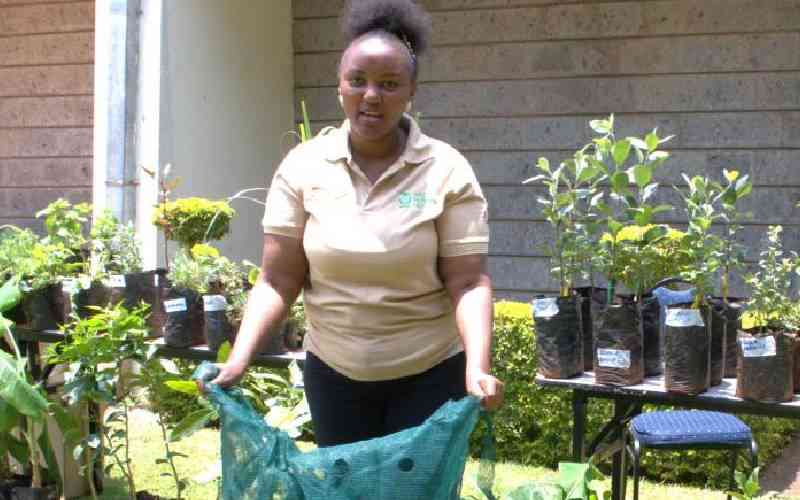
Barbara Mwaura from Anglican Development Services showcases a vertical farming bag designed for urban or areas with limited land at3rd National Agricultural Extension Symposium, in Nairobi. [Nanjinia Wamuswa, Standard]
Barbara Mwaura from Anglican Development Services (ADS) is one of the exhibitors demonstrating to farmers how they can maximise food production even with limited space, using innovative vertical farming techniques.
She showcases a vertical farming bag designed specifically for urban settings or areas with limited land. The bag is filled in layers—starting with stones at the bottom to aid water drainage, followed by alternating layers of soil and organic manure to enrich plant growth.
Holes are made on the sides of the bag, where seedlings can be planted horizontally, while the top surface also supports vertical planting. Among the plants that can be grown in the bag are sukuma wiki, spinach, onions, and herbs.
“The vertical bag not only conserves space but also reduces water usage, as the structure retains moisture better than traditional beds. The design improves air circulation, minimizes weed growth, and allows easier access for weeding and harvesting,” Barbara explains.
The bag is biodegradable, aligns with environmentally friendly farming practices, and contributes to climate change adaptation by promoting sustainable agriculture.
Barbara exhibited her innovation at the 3rd National Agricultural Extension Symposium, themed “From Silos to Systems: Strengthening Extension Systems Through Collective Actions Towards Sustainable Food Systems.”
The event is organized by the Forum for Agricultural Advisory Services–Kenya (KeFAAS), AGRA, One Acre Fund, and the Ministry of Agriculture and Livestock Development.
Peter Mwangi, the country focal person for KeFAAS, emphasised the critical role of extension services in transforming agricultural systems by moving from isolated efforts to a more coordinated and integrated approach.
He noted that in the agriculture sector, various actors have traditionally worked in silos, often without coordination. This lack of integration has hindered the effectiveness and reach of agricultural extension services, ultimately affecting farmers' access to timely and relevant innovations.
“When stakeholders fail to communicate and collaborate, valuable knowledge and resources do not reach the farmers who need them most. Innovations may exist, but without efficient extension systems, they remain inaccessible at the grassroots level,” Mwangi says.
Mwangi explained that the shift from siloed operations to a systemic approach means coming together as one coordinated body to deliver holistic extension services.
To facilitate this transformation, KeFAAS has convened a diverse group of stakeholders—including policymakers, researchers, extension officers, and farmers. Together, they are working to draft a joint action plan that aligns with the African Union Commission’s vision of coordinated agricultural development, where extension services are a central pillar.
Mwangi highlighted some successful examples, such as youth-led initiatives in Murang’a, where young people are providing extension services through both digital platforms and in-person visits.
Stay informed. Subscribe to our newsletter
“These young people are helping to close the gap where public extension services fall short. By using digital tools alongside field visits, they ensure that farmers receive timely, relevant, and practical support,” he says.
However, Mwangi noted that disparities still exist. While some counties invest heavily in agricultural inputs like seeds and fertilizers, they often neglect to fund extension services, which are vital for helping farmers use those inputs effectively.
Leonard Kubok, Deputy Director, Crop Resources Management Division at the Ministry of Agriculture and Livestock Development, said Kenya's agricultural extension services continue to face a myriad of challenges—chief among them being limitations in capacity, particularly in terms of personnel, infrastructure, and equipment.
He revealed that one of the most pressing issues is the aging workforce.
“For years, the extension system has relied heavily on an older generation of officers, with very few young professionals entering the field, especially at the county level,” Kubok says.
“This stagnation is largely due to reduced budget allocations, which have made it difficult for counties to recruit and onboard fresh, energetic, and tech-savvy extension workers who could bring new life and innovation into the system,” he added.
Kubok explained that infrastructure and equipment gaps also hamper service delivery. Many extension officers operate without adequate transport, ICT tools, or demonstration materials, making it difficult to reach farmers effectively, particularly in remote areas.
He warned:
“Without deliberate efforts to address these core capacity issues, the potential of extension services to support productivity, resilience, and innovation in Kenyan agriculture remains significantly undermined.”
The capacity crisis in Kenya’s extension services is further illustrated by the long-standing stagnation in recruitment. The last significant intake of extension graduates by the national government occurred in 2008—well before the advent of devolution.
Dr Lilian Lihasi, Executive Director of KeFAAS, echoed the need for systemic transformation in the delivery of extension services.
“Despite the development of technologies, adoption remains low because various players continue to work in silos. This lack of coordination limits impact, duplicates effort, and exhausts resources,” she explained.
She stressed that effective extension systems must be collaborative, inclusive, and responsive, especially to the needs of women and youth, who make up a significant portion of the farming population.
Dr. Lihasi also called on the private sector to be involved in co-creating extension solutions, identifying business opportunities while solving real problems.
“Extension services are the crucial link that help farmers identify their own challenges. When they do, they can adopt technologies that are truly relevant. We envision a system where the farmer is not just a producer, but a driver of transformation across the entire value chain—from farm to fork,” she said.


